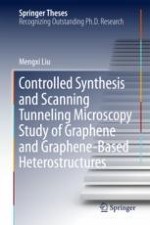2018 | Buch
Über dieses Buch
This thesis focuses on the energy band engineering of graphene. It presents pioneering findings on the controlled growth of graphene and graphene-based heterostructures, as well as scanning tunneling microscopy/scanning tunneling spectroscopy (STM/STS) studies on their electronic structures. The thesis primarily investigates two classes of graphene-based systems: (i) twisted bilayer graphene, which was synthesized on Rh substrates and manifests van Hove singularities near Fermi Level, and (ii) in-plane h-BN-G heterostructures, which were controllably synthesized in an ultrahigh vacuum chamber and demonstrate intriguing electronic properties on the interface. In short, the thesis offers revealing insights into the energy band engineering of graphene-based nanomaterials, which will greatly facilitate future graphene applications.
Anzeige
